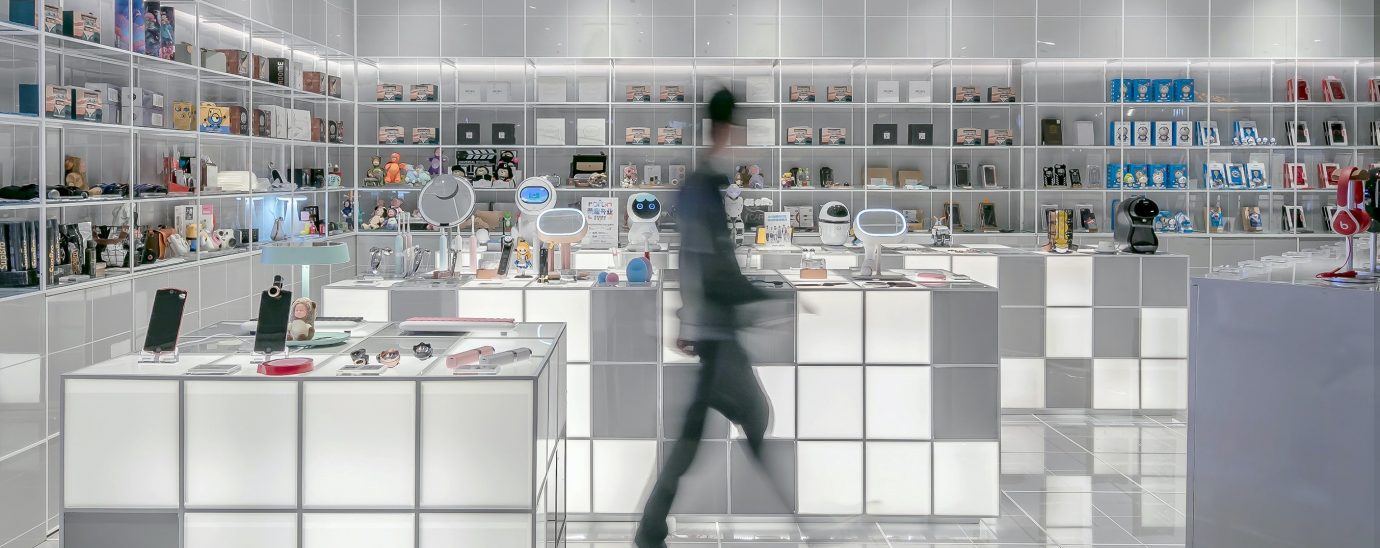Is ‘clicks and mortar’ the answer to future success for pure-play retailers?

The needs and desires of the modern consumer must be put first with a ‘Clicks and Mortar’ model, explains Russell Loarrdige, Director UK, ReachFive. There has been a shift in both customer expectations and attitudes, but if pure-play retailers recognise this and combine a personal online experience with immersive engagement, they too can succeed.
On the 12th of April, non-essential retail opened again in England. Sales during April jumped 9.2% in the country, says the Office for National Statistics (ONS). At this same time, clothing sales spiked almost 70% compared to March; sales were generally 10% higher than pre-pandemic levels, but interestingly, online sales dipped, affecting pure-play retailers. While the pandemic has changed shoppers buying habits and accelerated the shift to e-commerce, is the long-term future of retail online?
Even though some shoppers may have reservations about browsing and sticking to social distancing and other health protocols while shopping in stores, it is predicted that over time, more and more consumers will return to the shops because we enjoy the shopping experience.
As non-essential retail continues again across the UK, pure-play online retailers will suffer the same fate as the likes of Arcadia – who didn’t adapt quickly enough to embrace e-commerce and the wider omnichannel retail experience – unless they adopt a ‘clicks and mortar’ model, that considers modern consumers’ shopping needs.
The importance of ‘physical’
COVID has changed the shape of retail. It accelerated the adoption of e-commerce and highlighted the limitations of online-only models. But, the convenience of a slick online experience can be undermined by the disappointment experienced when clothes purchased don’t fit or the lamp doesn’t match the online description, especially if they have to be returned.
Online can short-change the purchase experience for bigger ticket items too. While buying a bike, sofa, or car online is possible, the experience is not the same. Shoppers want to touch, feel, and gauge the quality of these items and use store assistants’ expertise. And, however good the online experience may be – and with great personalisation that drives loyalty and engagement, that experience can be fantastic – it is incomplete.
Many pure-play digital retailers know how to meet customer purchase and delivery needs. They have explored social media to create communities and invested in interactive technologies to encourage customers towards the right products. But, what are they offering teenagers who want to hang out on the weekend, try on clothes and have a latte, for example?
Clicks and Mortar
Online shopping is convenient, but the past year has reinforced the divide between essential and non-essential retail; the difference between the products people need and items they enjoy buying. During this time, competition escalated too. Every retailer is online now. Customers have spent a year clicking from one to the next, so where’s the loyalty?
After the enforced isolation of the past year, the desire for physical shopping experiences, and human communication, is more sought after. If pure-play retailers can’t add high street engagement to their customer experience, other retailers will, which will dent their recent success and sales.
Exclusivity
Achieving this doesn’t mean pure-plays should invest in the store estate that created identikit high streets across the UK. No. But, there is an opportunity to think creatively about how, where and when customers can become part of a physical interaction that reinforces the brand experience.
Pop-ups could create this destination, with loyal customers invited for time-limited VIP events locally, before the pop-up moves to another town. The technology is simple: Wi-Fi, tablets, and mobile payment solutions enable this immediately. Loyalty solutions can capture customers both on and offline. There is no need for a full range of stock. A retailer could offer a VIP range, for example, or sample items that can be tried on in-store ordered and delivered to the customer. Screens, virtual mirrors, coffee, and hang out zones could be added, and retailers can create new customer destinations that enhance brand perception.
Or, customers can order items to the store, try them on, leave them or buy them. While there, they can also talk to switched-on brand ambassadors; have makeovers; get measured; take make-up quizzes – and test recommended products. As a result, they can have a better shopping experience.
Nurturing Customers
Adding a physical experience gives pure-plays an even better chance to retain customers for longer, as they move between brands. By building a profile for each customer across all the brands, retailers can follow customers as they move through teen fashion, and start to look for something more sophisticated.
Rather than losing customers to the competition here, proactive marketing can help nudge them across the brand portfolio to keep them within the business. For example, invite post-university students to a pop-up store for a ‘first job’ makeover, which provides a chance to capture customers.
The clever use of physical stores provides new ways of engaging with customers that change brand perception and engagement.
Conclusion
Just as traditional high street retailers were baffled by the online model, pure-play retailers have no physical retail experience. With the acquisition of the Arcadia brands and Debenhams, Boohoo and ASOS missed the chance to buy this expertise, those individuals with skills in estates management, shop fit and, critically, face to face customer interaction.
Buying these skills back in or developing this expertise internally takes time. But other barriers have vanished. Retail landlords agree shorter leases; companies are actively facilitating pop up shops for retailers. Customers like the change and that high streets are not the same across the country.
READ MORE:
- Powering the future of Pride: T-Mobile invests in educational equity for LGBTQ+ youth
- 5G, FWA, WWAN: Inside the Ericsson Mobility Report
- Ransomware surges in, and the data floods out
- How technology can help consumers and businesses manage personal data online
This change can be achieved so long as pure-plays accept that an efficient, personalised and engaging online retail experience no longer offers differentiation. If the pure-play retailers are to avoid the fate of the high street dinosaurs, they need to recognise the shift in customer expectations and attitudes. Online footfall alone is not going to keep these retailers in the business. Clicks and mortar is the future: to create and retain loyal customers, retailers need to combine the efficient, personal online experience with the immersive engagement that is only possible face to face.
For more news from Top Business Tech, don’t forget to subscribe to our daily bulletin!
